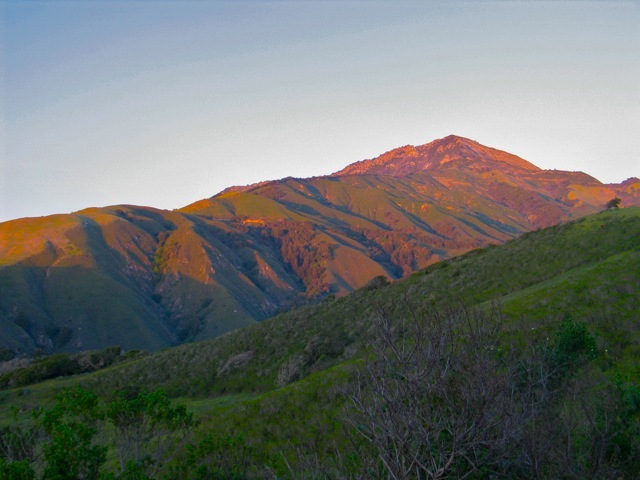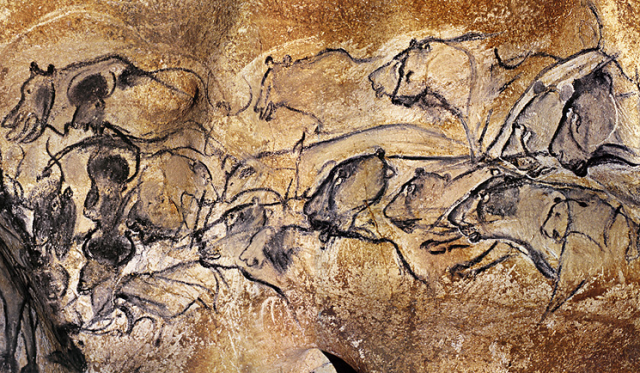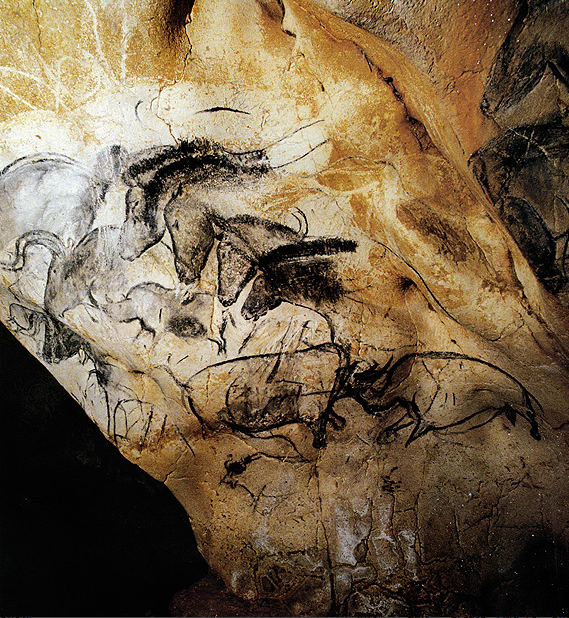Looking for Al Clarke again...
 Monday, May 9, 2011 at 2:10AM
Monday, May 9, 2011 at 2:10AM
Even in a mountainscape renowned for outlaws and eccentrics, Al Clarke has held his own ground well.
Jeff Norman and the Big Sur Historical Society, "Big Sur," p. 52
Doc Roberts (instrumental in the creation of Highway 1) had a cabin at the confluence of the north and south forks of the Little Sur River that he called Cyclone. He called Al Clarke "psychic" — based on Clarke's uncanny timing for emerging from the Little Sur trail just when Doc Roberts or the mail-wagon was going past.
 The stone cistern at Al Clarke's homestead. Photo courtesy of Melissa Lofton.
The stone cistern at Al Clarke's homestead. Photo courtesy of Melissa Lofton.
Both Robinson Jeffers and Jaime de Angulo came upon Al Clarke this way. In the caption beside the photograph of Al Clarke above, Jeff Norman is referring to the trip that John Smeaton Chase made on horseback up the length of the California coast in 1911. During that trip Chase camped for a couple of nights at Idylwild on the Little Sur. On one of those days, he made a two-mile ramble up the Little Sur trail and happened upon Al Clarke at his homestead.
I won't repeat these accounts of Al Clarke for you — but they're well worth finding and reading on their own. I'll cite the references below.
 Pahch-kah-la che-pil — the Rumsien name for the mountain also called Pico Blanco now. Photo courtesy of Melissa Lofton.
Pahch-kah-la che-pil — the Rumsien name for the mountain also called Pico Blanco now. Photo courtesy of Melissa Lofton.
But it was only on his deathbed that Al Clarke spoke of his most important find.
One day when he was pickaxing in the shaft of his silver mine, suddenly the wall gave way, he said, and he stumbled into a huge chamber. "He crawled deeper into the mountain and found stalactites and stalagmites in one long cavern after another..." He came upon an underground river...and then "in the most wondrous chamber of all, the dry floor of which was filled with mortar holes, he found painted walls, with pictographs of 'elephants with long, shaggy hair and cats with long sharp teeth.'"
 "The Panel of the Lions" at Chauvet Cave in the Ardeche region of FranceAl Clarke's story came back to me vividly two nights ago when I saw Werner Herzog's Cave of Forgotten Dreams.
"The Panel of the Lions" at Chauvet Cave in the Ardeche region of FranceAl Clarke's story came back to me vividly two nights ago when I saw Werner Herzog's Cave of Forgotten Dreams.
I'm still spellbound by the film. Something more important went on — and is still going on — than can be explained by saying that the film takes you down into the landscape where these animal-spirits were painted onto limestone walls by greaselight and torchlight over 30,000 years ago.
 "Fighting Rhinos and Four Horses" at Chauvet Cave in the Ardeche region of France.
"Fighting Rhinos and Four Horses" at Chauvet Cave in the Ardeche region of France.
Courtesy of Ruby Gear Woicekowski. Photo appears in Rosalind Sharpe Wall's "A Wild Coast and Lonely."It may seem impossible to credit Al Clarke's deathbed tale of stumbling into such caverns himself. He died c. 1936. The caves of Alta Mira had been discovered in 1879. He might have known of them. But Lascaux wasn't discovered until 1940 and Chauvet not until 1994.
After years of solitude behind Pico Blanco, he seemed at best eccentric. Roche Castro told Jaime de Angulo this...
"You see that man walking over the moor with that long stride? Must be Uncle Al — nobody else walks like that — best carpenter on the Coast with broad-ax and adze — but he is a lunatic of the first water — I'll tell you about him later."

Still, the limestone landscape of Chauvet is the limestone landscape of Pico Blanco, too — and here on its hidden side, winter rains fall into the porous limestone and leave no trace behind. The mountain is catacombed with caverns — no matter what you think might be found in them.
Look closely and you'll see in the southeast where a whole facet of the mountain has dropped away — and buried much that we no longer know in boulders and talus at its feet.
______________________
Notes
Though unnamed, Al Clarke can be recognized in a preface Robinson Jeffers wrote to Horace Lyons' Jeffers Country: The Seed Plots of Robinson Jeffers' Poetry. A shorter version of that preface also appears in Not Man Apart. Al Clarke also appears in Jaime de Angulo's account of first coming to this coast — published first under the title "La Costa del Sur" and more recently as "On First Seeing the Coast." John Smeaton Chase's encounter is described in chapter 16 of California Coast Trails: A Horseback Adventure from Mexico to Oregon.
John Woolfenden re-tells the story of Al Clarke's discovery of the caverns at Pico Blanco in Big Sur: A Battle for the Wilderness, 1869 - 1985 — and Rosalind Sharp Wall amplifies upon the lore of Al Clarke in A Wild Coast and Lonely.
Cave of Forgotten Dreams opened on May 6 in the San Francisco Bay Area. See it in 3-D, though. Because of how the Chauvet painters utilize the depth dimensions in the cave — and the texture and contours of the limestone — filming in 3-D is no gimmick here.
The Bradshaw Foundation has a good site for more information on Chauvet and on rock art around the world. And here is a link to a terrific NPR discussion of Chauvet with Werner Herzog, novelist Cormac McCarthy, and physicist Lawrence Krauss.
